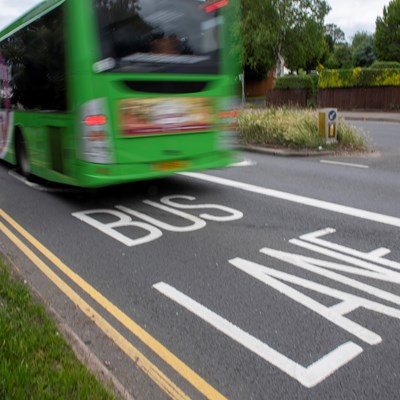MAJOR improvements to air quality in Leicester mean that plans to charge the most polluting vehicles to enter the city centre are no longer required.
In a letter to Leicester City Council, the Government’s Department for Environment Food and Rural Affairs (Defra) has confirmed that a proposed ‘clean air zone’ for buses and taxis within the inner ring road is no longer needed for the Leicester to meet challenging targets to drive down air pollution.
In 2018, along with several other local authorities, Leicester City Council was directed by the Government to develop a plan that would make the city compliant with EU nitrogen dioxide levels in the shortest possible time. At the time, the Government favoured a Clean Air Zone as the most effective way of doing this.
However, the latest annual figures – collected from a network of air quality monitoring stations at five key locations across the city in 2020 – show that Leicester is meeting all current EU air quality objectives, including for nitrogen dioxide (NO2) for the first time since monitoring began over 20 years ago.
This means a clean air zone will not be required, thanks to the huge improvements that have been made over the last three years.
The city council has, however, been awarded over £830,000 of government cash to continue its work to promote walking, cycling and other forms of cleaner, greener transport over the next two years. The new funding will support the local launch of the ECO Stars clean fleet recognition scheme for freight operators and a comprehensive programme of events, training and other activates to help encourage residents, workers and visitors to use more sustainable transport.
Deputy City Mayor Cllr Adam Clarke, who leads on transport and environment, said: “The dramatic improvement in air quality is good news for the city and we’re proud to be recognised for the huge efforts we and our partners have put into achieving this.
“However, we know there is still more to be done and we are doubling down on efforts to remain below EU limits and continue the huge improvements we have seen in recent years.
“We are developing very ambitious plans to promote travel by bus, bicycle and walking that will help make substantial further improvements to the city’s air quality. These include our new Local Transport Plan and Workplace Parking Levy proposals, and our new Bus Service Improvement plan that was recently submitted to Government.
“We have also just announced massive investment to increase the city’s electric bus fleet by almost 100 vehicles, as part of ambitious plans to upgrade half of Leicester’s buses fleet to electric by 2025.
“It is vital that we continue to encourage people to make the shift to sustainable transport to help ensure that we make lasting improvements to air quality and achieve our aim of healthier air for Leicester. It is also a key change we can all make in doing our bit to tackle the climate emergency.”
European and national guidelines set an annual mean limit value of 40micrograms per cubic metre (µg/m3) for nitrogen dioxide in the air.
Average levels of NO2 improved significantly at all five monitoring locations across Leicester in 2020 and represent a reduction of around 60 per cent since 2010, when the highest levels – of up to 80 µg/m3 – were recorded.
At Vaughan Way – one of the city’s busiest roads and an air quality hot spot – average NO2 levels for 2020 were 35.2µg/m3 compared to 45.7µg/m3 in 2019.
At Abbey Lane, annual levels fell from 31.4µg/m3 in 2019 to 24.3µg/m3 in 2020, the lowest recorded level from any of the city’s five monitoring stations.
At Glenhills Way, NO2 levels were down from 48.6µg/m3 in 2019 to 38.8µg/m3 in 2020; Melton Road saw a drop from 38.5µg/m3 in 2019 to 28µg/m3 last year; and, at St Matthew’s Way, a reduction from 40.6µg/m3 to 31.4µg/m3 was recorded.
